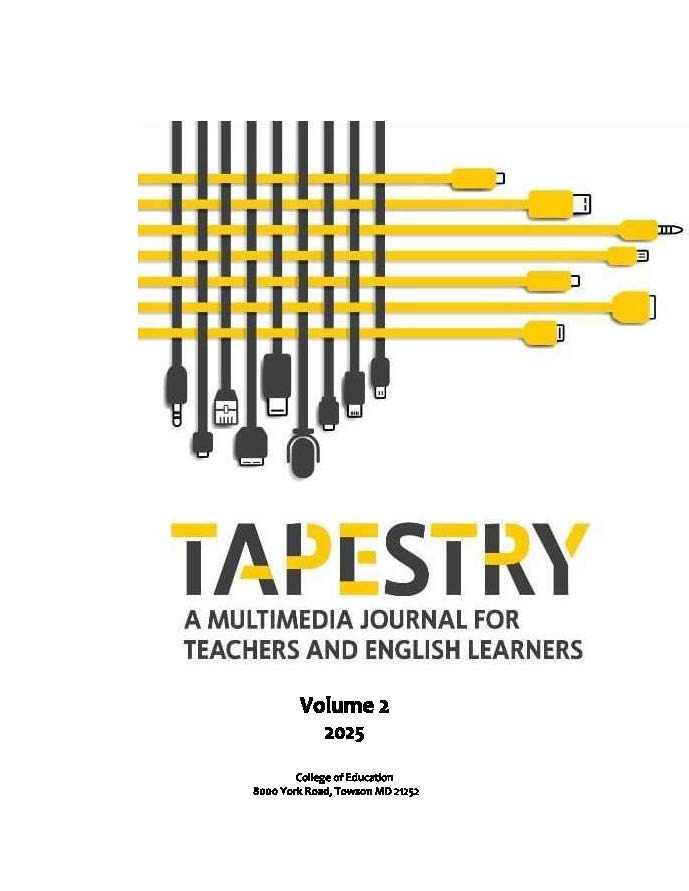The Wise-Compassionate Framework: Redefining Educational Systems for Equity and Holistic Student Success
DOI:
https://doi.org/10.59207/tap-tu.v2i.223Keywords:
Wise-Compasion Framework, culturally responsive teaching, multilingual learners, student successAbstract
In an era of increasing diversity and complexity in education, the Wise-Compassionate Framework (WCF) offers a revolutionary model that integrates compassion, cultural responsiveness, and evidence-based interventions within the Multi-Tiered Systems of Support (MTSS) and Whole School, Whole Community, Whole Child (WSCC) paradigms. This article introduces the WCF's evolved iteration, emphasizing its applicability in supporting multilingual learners and promoting equity. By synthesizing established theories with new insights, the WCF offers educators, school leaders, and researchers a profound, practical approach to creating inclusive educational environments that foster academic achievement and social-emotional well-being.
References
Auerbach, S. (2012). School leadership for authentic family and community partnerships: Research perspectives for transforming practice. Routledge.
AVID Open Access. (n.d.). Ed Tip: Student voice and choice. https://avidopenaccess.org/resource/ed-tip-student-voice-and-choice/
Blank, M. J., Jacobson, R., & Pearson, S. S. (2010). Financing community schools: Leveraging resources to support student success. Coalition for Community Schools.
Campbell, A. L., & Mogashana, D. (2024). Assessing the effectiveness of academic coaching interventions for student success in higher education: A systematic review. Innovations in Education and Teaching International, 1–23. https://doi.org/10.1080/14703297.2024.2417173
DuFour, R., DuFour, R., Eaker, R., Many, T., & Mattos, M. (2016). Learning by doing: A handbook for Professional learning communities at work™ (3rd ed.). Solution Tree Press.
Echevarría, J. (2023, February 28). 10 evidence-based practices for teaching multilingual learners. Reflections on Teaching Multilingual Learners. https://www.janaechevarria.com/?p=5377
FinSMEs. (2023, August 16). Integrating technology in English language teaching: Strategies and best practices. https://www.finsmes.com/2023/08/integrating-technology-in-english-language-teaching-strategies-and-best-practices.html
González, N., Moll, L. C., & Amanti, C. (Eds.). (2005). Funds of knowledge: Theorizing practices in households, communities, and classrooms. Lawrence Erlbaum Associates.
Gay, G. (2018). Culturally responsive teaching: Theory, research, and practice (3rd ed.). Teachers College Press.
Hammond, Z. (2015). Culturally responsive teaching and the brain: Promoting authentic engagement and rigor among culturally and linguistically diverse students. Corwin Press.
Hartman, J. (n.d.). Voice & choice in modern pedagogy. https://www.developwithjud.com/post/voice-and-choice
Hernández, A. M. (2022). Enacting asset-based approaches for critically conscious dual language teachers: The administrator's role in a professional learning community. Journal of School Administration Research and Development, 7(1), 22-35.
HMH. (2024, May 13). The role of technology for ELL students in the classroom. https://www.hmhco.com/blog/technology-for-ell-students-in-the-classroom
IES (Institute of Education Sciences). (2020, January 10). Individual learning plans: Students creating their pathways to postsecondary success. U.S. Department of Education. https://ies.ed.gov/ncee/rel/Products/Region/southwest/Blog/90083
Immordino-Yang, M. H., Darling-Hammond, L., & Krone, C. (2018). The brain basis for integrated social,
emotional, and academic development: How emotions and social relationships drive learning. The Aspen Institute.
Kuhl, L., Russell Valezy, J., & Bettney, E. (2021, May 25). Elevate student voice & choice in diverse learning settings. The International Educator. https://www.tieonline.com/article/2953/elevate-student-voice-choice-in-diverse-learning-setting
Ladson-Billings, G. (2021). Critical race theory in education: A scholar’s journey. Teachers College Press.
Lucas, T., Villegas, A. M., & Freedson-Gonzalez, M. (2008). Linguistically responsive teacher education: Preparing classroom teachers to teach English language learners. Journal of Teacher Education, 59(4), 361-373.
Mercado, F. (2021). Wise-Compassionate Framework: A leadership guide to educational equity. Journal of Leadership, Equity, and Research, 7(1).
Moll, L. C., Amanti, C., Neff, D., & Gonzalez, N. (1992). Funds of knowledge for teaching: Using a qualitative approach to connect homes and classrooms. Theory Into Practice, 31(2), 132-141.
Nordmeyer, J., Boals, T., MacDonald, R., & Westerlund, R. (2021, March 1). What does equity really mean for multilingual learners? ASCD. https://www.ascd.org/el/articles/what-does-equity-really-mean-for-multilingual-learners
Olsen, L. (2014). Meeting the unique needs of long-term English language learners: A guide for educators. National Education Association.
Rintaningrum, R., Aldous, C., & Conway, R. (2023). Technology integration in English language teaching and learning. Cogent Education, 10(1). https://doi.org/10.1080/2331186X.2022.2164690
Ross, E. M. (2023, March 21). The case for strong family and community engagement in schools: A roundup of the latest K–12 research reveals persuasive evidence. Harvard Graduate School of Education. https://www.gse.harvard.edu/ideas/usable-knowledge/23/03/case-strong-family-and-community-engagement-schools
Shadiev, R., Hwang, W. Y., Azarfam, A. Y., & Gong, D. (2023). Editorial: Technology-assisted cultural diversity learning. Frontiers in Psychology, 14. https://doi.org/10.3389/fpsyg.2023.1214693
Short, D. J., & Fitzsimmons, S. (2007). Double the work: Challenges and solutions to acquiring language and academic literacy for adolescent English language learners. Alliance for Excellent Education.
Tschannen-Moran, M., & Tschannen-Moran, B. (2010). Evocative coaching: Transforming schools one conversation at a time. Jossey-Bass.
Tuhkala, A., Ekonoja, A., & Hämäläinen, R. (2021). Tensions of student voice in higher education: Involving students in degree programme curricula design. Innovations in Education and Teaching International, 58(4), 451-461. https://doi.org/10.1080/14703297.2020.1763189
Weeks, C. (2023, November 14). Supporting multilingual learners with an asset-based approach. Participate Learning. https://www.participatelearning.com/blog/supporting-multilingual-learners-with-an-asset-based-approach
Weist, M. D., Lever, N. A., Bradshaw, C. P., & Owens, J. S. (Eds.). (2014). Handbook of school mental health: Research, training, practice, and policy (2nd ed.). Springer.
World Health Organization (WHO). (2022). Mental health and COVID-19: Early evidence of the pandemic’s impact. https://www.who.int/publications/i/item/WHO-2019-nCoV-Sci_Brief-Mental_health-2022.1
Downloads
Additional Files
Published
Issue
Section
License
Copyright (c) 2025 Felipe Mercado

This work is licensed under a Creative Commons Attribution 4.0 International License.



